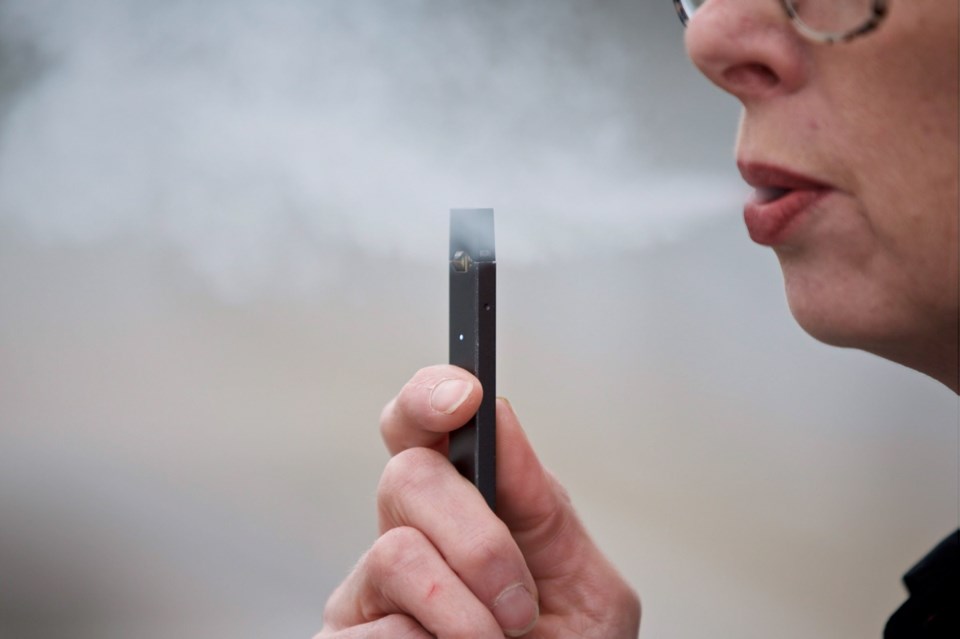The province is planning to dramatically reduce the number of vendors that can sell e-cigarettes and vaping products, according to Health Minister Adrian Dix.
Tens of thousands of vendors carry e-cigarettes and vaping products, many of which contain nicotine. But the provincial regulation doesn’t require people who sell vaping products to have a license the way it does with tobacco.
“One of the reasons you can enforce the tobacco regulation is that there and 6,000 (vendors) with licenses, while there are 90,000 points of sale for vaping products,” said Dix. “That makes it very hard to enforce the regulation and because they aren’t licensed, you can’t even take their license away.”
While three U.S. states have taken steps to ban flavoured e-juice, Dix said regulating flavourings in Canada is a federal responsibility.
“We are disappointed that (Ottawa) hasn’t acted yet, but we are hopeful they will do soon,” he said.
The provincial government will also undertake a public education campaign on the hazards of vaping and nicotine addiction focused on young people and delivered by young people.
“We need to be clear that if you are not a smoker, vaping is not for you,” said Dix.
Municipal leaders this week joined the chorus of voices calling for stricter regulation of the sale of flavoured nicotine vaping products.
A resolution calling for stricter rules over marketing and sales of e-cigarettes and Vaping systems to minors passed at the conference of the Union of B.C. Municipalities.
Washington Governor Jay Inslee issued an executive order today calling for a ban on flavoured e-juice in vaping products that are laced with nicotine and THC, the psychoactive ingredient in cannabis. Michigan and New York State have also taken tightened access to flavoured e-juice.
The Canadian Paediatric Society has also called for a ban on flavoured vaping products in Canada.
Fruit- and candy-flavoured products that appeal to young people are a particular concern, because nicotine vaping has surpassed cigarettes, cannabis and drinking alcohol as the most popular drug-delivery system among teens in senior grades in B.C.
Data from the 2018 B.C. Adolescent Health Survey found that 21 per cent of teens between 12 and 19 years of age had used a nicotine-laced vaping product in the past 30 days.
E-cigarettes and vaping wands create a mist that the user inhales, which may contain nicotine, flavouring agents and THC, the psychoactive ingredient in cannabis.
The long-term effects of inhaling e-juice ingredients such as glycerine and propylene glycol are unknown, but more than 450 cases of acute vaping-related illness have been recorded in the United States, including 13 deaths.
Three reports of vaping related illness are being investigated in Canada, according to the federal public health officer.
“Momentum is certainly building in jurisdictions across North America and now in British Columbia,” said Liberal MLA Todd Stone. “We have some of the strictest regulations in the country already, the problem is that a lot has happened in the past three years with vaping becoming so popular with youth.”
Vaping products deliberately target youth with flavours such as “gummy bear, candy floss and fruit medley,” said the member for Kamloops-South Thompson.
National action on vaping is unlikely for at least six months because of the timing of the federal election, he noted.
“B.C. has the ability to ban flavoured vaping products tomorrow if it wanted to,” he said. “What doesn’t require any legislation or action from Ottawa is awareness and prevention programs in every middle and high school.”
— With a file from Canadian Press



